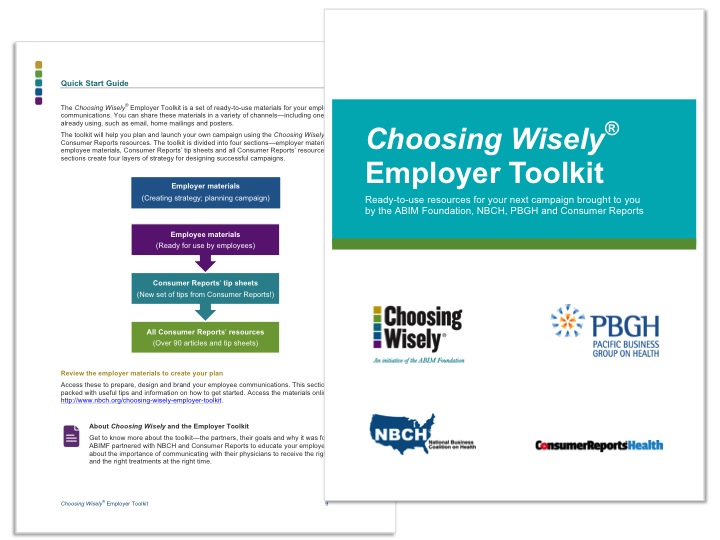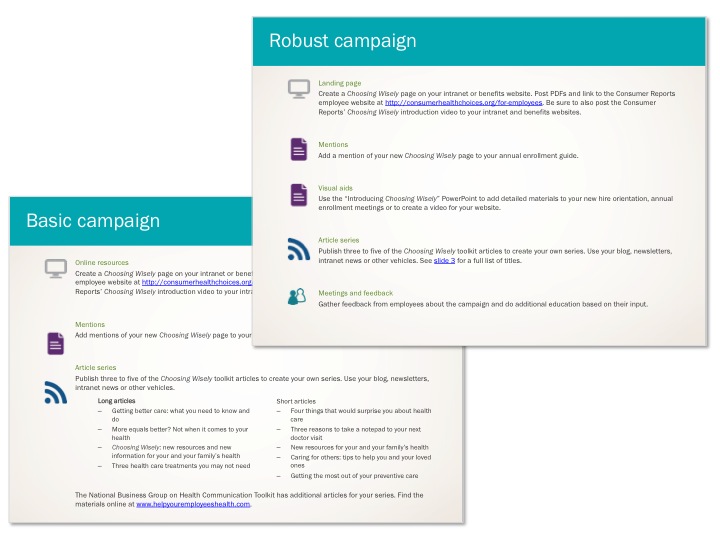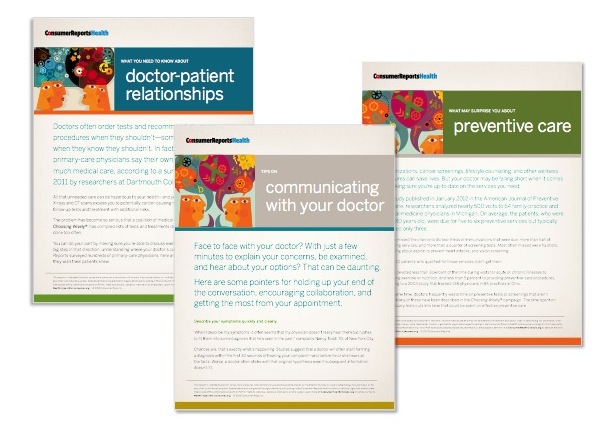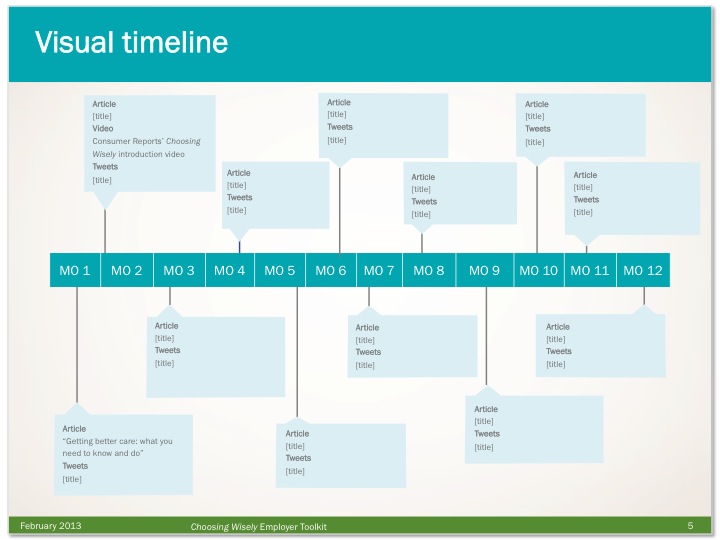
New case study: Choosing Wisely Campaign gets employees engaged in their health decisions
We've posted on the blog before about the Choosing Wisely campaign and how excited we were to be working in collaboration with PBGH, NBCH and Consumer Reports. Now, we're happy to share a case study that speaks more to the "why" behind the campaign and shares how two of our clients have implemented pieces of the employer toolkit.
National organizations representing medical specialists, in collaboration with Consumer Reports and a number of consumer-focused organizations, are working with the ABIM Foundation to help physicians, patients and other health care stakeholders think and talk about the overuse of health care resources in the United States. This initiative is called Choosing Wisely®.
Situation

The Institute of Medicine estimates that up to $750 billion, or roughly 30%, of health care spending is wasted on unnecessary services. Nearly half of primary care physicians even admit that their own patients get too much medical care, according to researchers at Dartmouth College.
All that unnecessary care is not helping people live better or longer. Although our health care spending is first in the world, more than twice that of other wealthy countries, life expectancy in the United States is about 78 years, below most first-world nations—and even below some developing countries.
Plus, the costs can be enormous. A 2011 study found that the price tag for 12 commonly overused tests, such as annual electrocardiograms (EKGs) for heart disease and imaging tests for lower-back pain, was about $6.8 billion.
Challenge
Somewhere between a patient’s visit to the doctor and the completion of an unnecessary test, there is a disconnect.

The goal of Choosing Wisely® is to encourage conversations between physicians and patients about health care overuse and support physicians’ efforts to help patients make smarter and more effective health care choices.
Physicians and patients must work together to make wise decisions about treatment. This means helping patients learn about care that is successful, safe and truly necessary.
But how should those very important conversations get started?
Solution
Employers can take a bigger role in helping improve the health education and outcomes of their employees.
Recognizing this, PBGH, NBCH, Consumer Reports and Benz Communications created The Choosing Wisely® Employer Toolkit.

The toolkit brings together articles and tip sheets from Consumer Reports that can be used easily to build campaigns and integrate into existing communications resources. Employers can use templates from the toolkit to introduce the campaign and grab employees’ attention.
The Choosing Wisely® Employer Toolkit includes:
- Eight ready-to-use articles
- More than 10 tip sheets from Consumer Reports
- A PowerPoint presentation to use in employee meetings
- An index of Consumer Reports resources
- An index of employer materials, with a reference guide to familiarize employers with the available resources and their intended purpose
- Sample campaigns, including a three-step guide to launching a Choosing Wisely® campaign
- A sample Choosing Wisely® campaign timeline/editorial calendar
- Tips for integrating a Choosing Wisely® campaign with current wellness, enrollment and other benefits communications campaigns
It’s practical information that anyone can use—tips on talking with doctors, coping with serious illness, preventive care and the do's and don’ts of common tests.
The Choosing Wisely® Employer Toolkit makes it easy to point employees to the tools and resources they need to have better control of their health and health care spending.
Results
Among the many employers that have added the Choosing Wisely® Employer Toolkit to their benefits websites, two Benz Communications clients had some noteworthy experiences to share.
For Pitney Bowes, a leader in technology and communication, the Choosing Wisely® Employer Toolkit quickly caught the attention of the company’s Benefits Director for its approach of encouraging meaningful conversations between doctors and patients, as well as leveraging online resources to educate consumers about proactively managing their health care.
The toolkit aligns with Pitney Bowes’ health care benefits strategy—focused on supporting employees to make wise health care decisions on the cost and quality of the services they receive—and the company introduced Choosing Wisely® as a new tool for employees to use while navigating the health care system.
At Danaher, a science and technology leader that designs, manufactures and markets innovative products and services to professional, medical, industrial and commercial customers, implementing Choosing Wisely® is another way to help associates take greater control of their health care decisions and spending.
With significant benefits and health care reform changes on the horizon for 2014, Choosing Wisely® resources will help Danaher associates get more engaged with their doctors and make smarter choices on how and when they receive care.
Both employers have integrated Choosing Wisely® into their existing employee communications through channels such as blog posts and featured web content. For both companies, the toolkit’s straightforward, easy-to-understand tips are just the right kind of approach that resonates with employees—which is easy to see from employees’ viewing statistics on the Choosing Wisely® page.
Analytics show that employees are paying attention to the content. Data from Microsoft Research show that without a solid value proposition, most users start to disengage from online content after just 10 seconds—and the average time on a webpage is only about 30 seconds. Getting users to stay on a page for two minutes or longer, the researchers say, “is an eternity on the Web.” Danaher associates spend an average of one and a half minutes on the Choosing Wisely® page. At Pitney Bowes, employees’ average time on the page is well over two minutes!
With its ready-to-use content that’s easily customizable, the Choosing Wisely® Employer Toolkit can be a valuable, turnkey resource for any employer looking to offer a fresh and engaging educational component to its health care communications strategy.

